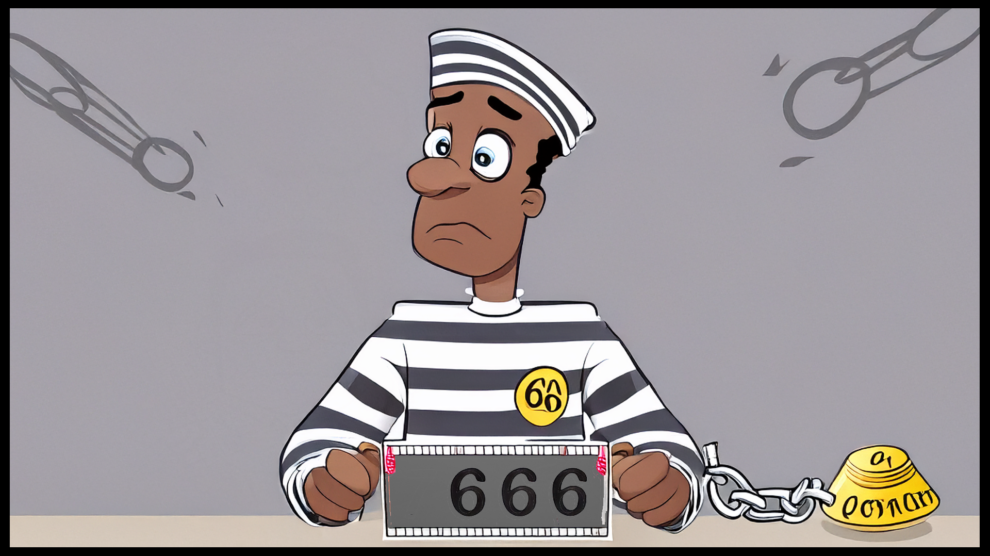In 1980, a colossal scandal shook the Pennsylvania Lottery to its core. The infamous Triple Six Fix emerged as a calculated scheme orchestrated by Nick Perry, the show’s trusted host, along with his carefully selected accomplices. Their audacious plan to manipulate a $3.5 million jackpot nearly succeeded with clockwork precision. However, their downfall began when excessive greed led to suspicious betting patterns, ultimately prompting an anonymous whistleblower to alert the authorities. The reverberations of this scandal extended far beyond Pennsylvania’s borders, fundamentally transforming lottery systems across America. Moreover, the incident captured Hollywood’s attention and revolutionized lottery security protocols nationwide.
The Ringleader and His Big Idea
Nick Perry, originally Nicholas Pericles Katsafanas, born in 1916, orchestrated one of history’s most ingenious lottery deceptions. As the charismatic host of Pennsylvania’s The Daily Number, Perry masterfully concealed his duplicitous nature behind a facade of charm. He methodically assembled an expert team: the shrewd Maragos brothers, Jack and Pete; artistic virtuoso Joseph Bock; lottery veteran Edward Plevel; backstage operative Fred Luman; and ticket specialist William Moran. Together, they meticulously crafted a sophisticated scheme to manipulate the three-number lottery game for substantial financial gain.
On April 24, 1980, the conspirators executed their intricately planned operation. Through precise weight manipulation of the lottery balls, they engineered specific number combinations while leaving the numbers 4 and 6 untouched. Consequently, this reduced the possible winning combinations to eight specific sets: 444, 446, 464, 466, 644, 646, 664, and 666. The group strategically placed bets on each combination, ensuring their victory. When 666 emerged as the winning number, they stood to collect $1.18 million from the total $3.5 million prize pool – equivalent to approximately $4.5 million in today’s currency.
The Functioning and Near Success
The system operated with remarkable precision and teetered on the edge of triumph. Its significant impact stemmed from incorporating revolutionary technology that was transforming the industry. The operation demanded profound expertise from its participants, requiring both theoretical understanding and practical mastery of intricate details.
Nevertheless, several minor misjudgments and unfortunate circumstances contributed to their ultimate failure. Indeed, even seemingly insignificant errors can cascade into catastrophic consequences, and this case proved no exception. Despite the system’s near-perfect execution, these accumulated miscalculations eventually led to its unraveling, demonstrating how even the most meticulously planned schemes can falter due to overlooked details.
Despite its flaws, the scheme’s architecture and strategic planning commanded respect. The conspirators had invested considerable effort, meticulously refining every element. Their unwavering commitment to crafting an impeccable strategy was unmistakable. They ensured each component of the operation stood ready for execution.
The system’s partial success revealed its potential. A marginally closer attention to detail might have transformed this near-victory into an absolute triumph. Future attempts would necessitate precise execution of these nuances to prevent another close failure.
The conspirators executed their plan with remarkable precision. Joseph Bock, leveraging his position as the art director, methodically altered the lottery machine’s white balls. He calculated their weights with scientific accuracy, deliberately excluding numbers 4 and 6 from modification. This manipulation ensured these specific numbers would emerge when subjected to the machine’s air pressure. The architects of this deception demonstrated remarkable ingenuity in dispersing their ticket purchases across numerous locations to avoid detection. They strategically recruited various associates to purchase tickets throughout different venues, maintaining an appearance of normalcy. On the crucial evening, Nick Perry maintained his composure during the television broadcast, betraying no sign of involvement even as the manipulated number 666 materialized before the audience.
Initially, the group believed their scheme impenetrable—they anticipated their winnings would blend seamlessly with legitimate winners who might have chosen identical numbers by chance. However, their fatal miscalculation stemmed from unbridled greed: their substantial wagers on eight specific number combinations created an irregular betting pattern that quickly attracted the attention of lottery officials and law enforcement.
The Detective Work: A Heads-Up and a Bunch of Stubbs
The scheme’s vulnerability manifested rapidly as it unraveled. Lottery officials identified an unprecedented surge in post-draw wagers, particularly those featuring 4s and 6s. This anomalous betting pattern deviated significantly from typical random selection behavior, triggering immediate suspicion among surveillance personnel. The crucial breakthrough emerged when an anonymous informant approached authorities regarding suspicious activities at a Philadelphia-area establishment. This witness had observed the Maragos brothers exhibiting unusual behavior while purchasing numerous tickets with predetermined number combinations.
The authorities acted swiftly on the tip-off, launching a meticulous investigation that yielded substantial evidence. Their examination of the lottery machine revealed deliberately tampered balls with strategically altered weights. Through careful financial tracking, they identified the locations of suspicious ticket purchases and exposed the operation’s key orchestrators. The coordinated raids proved particularly fruitful, with authorities seizing $1.8 million in cash and questionable lottery tickets from the Maragos brothers alone. The overwhelming evidence left the perpetrators with no viable defense, causing their elaborate scheme to crumble spectacularly.
The Dust Settles: Guilty Verdicts and New Rules
Justice descended swiftly and decisatively. Nick Perry faced his day of reckoning on May 20, 1981, when prosecutors presented an ironclad case against him. The jury found him guilty on multiple counts, including criminal conspiracy, theft by deception, and rigging a publicly viewed contest. The court sentenced him to seven years in prison, though he served approximately two years. His accomplices met similar fates: Edward Plevel received a two-year sentence, while Fred Luman and William Moran strategically pleaded guilty for lighter sentences. The prosecution of the Maragos brothers and their associates effectively dismantled the criminal enterprise.
The scandal catalyzed fundamental reforms in Pennsylvania’s lottery system. Governor Dick Thornburgh responded decisively, implementing comprehensive safeguards against future manipulation. The lottery drawings transferred immediately from WTAE in Pittsburgh to WHP-TV in Harrisburg, centralizing control over the operation. The administration appointed a dedicated security director and instituted thorough background checks for all lottery personnel. By 1981, KDKA-TV assumed responsibility for broadcasting the drawings, further strengthening the system’s integrity. These pioneering security measures established new standards for lottery operations nationwide, creating a robust framework designed to prevent similar schemes.
A Cultural Footprint
The Triple Six Fix transcended its criminal origins to embed itself deeply in American cultural consciousness. Hollywood seized upon the tale, producing the darkly humorous “Lucky Numbers” in 2000, starring John Travolta and Lisa Kudrow. Though the film took creative liberties, it captured the raw essence and pulsating tension of the actual events. The Game Show Network delved deeper in 2006, crafting a comprehensive documentary for their “Anything to Win” series, enriched with firsthand accounts from journalists who covered the original story. The scandal’s ripples continued to influence television, spawning episodes in popular series like “Castle” (2013) and “Mysteries at the Museum” (2011). Today, visitors to Hershey can examine authentic artifacts from this audacious scheme at the Pennsylvania State Police Museum, ensuring the story’s preservation for future generations.
The Twisted Tale of 666
In an ironic turn of events, the selection of 666—a number traditionally associated with malevolence—proved to be the conspirators’ undoing. Their hubris led them to believe their scheme was impenetrable, but this overconfidence ultimately sealed their fate. As one astute detective observed, “They believed they could manipulate probability, but probability manipulated them instead.” The Triple Six Fix stands as a compelling narrative of unbridled ambition, ingenious deception, and the inevitable downfall that accompanies excessive cleverness. It serves as a timeless reminder that even the most meticulously crafted plans can unravel under the weight of their own complexity.
If you like this story, check some of my other stories from my section Lottery Stories









